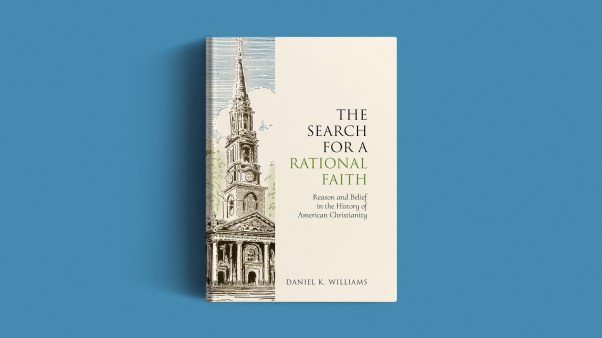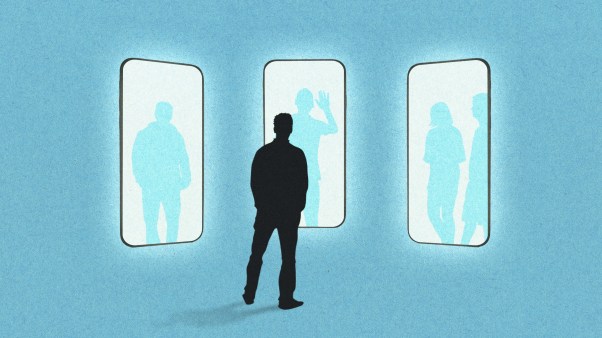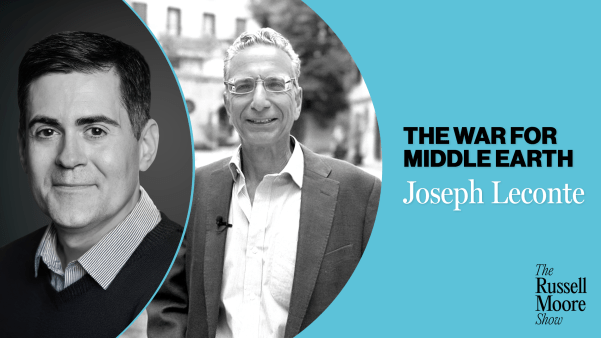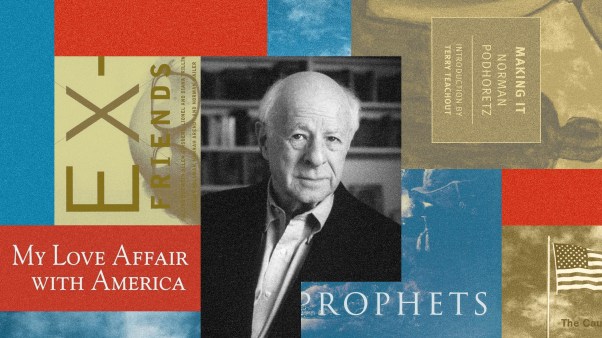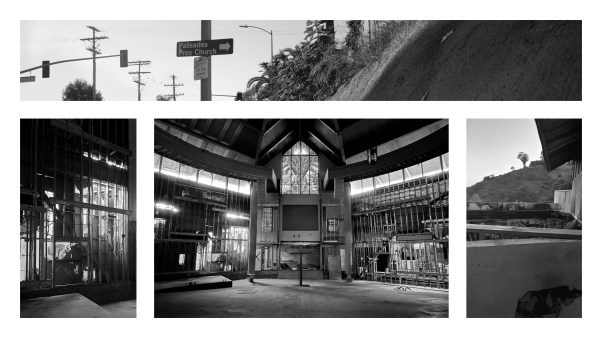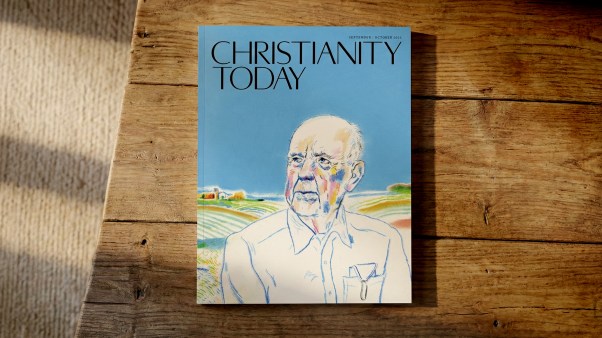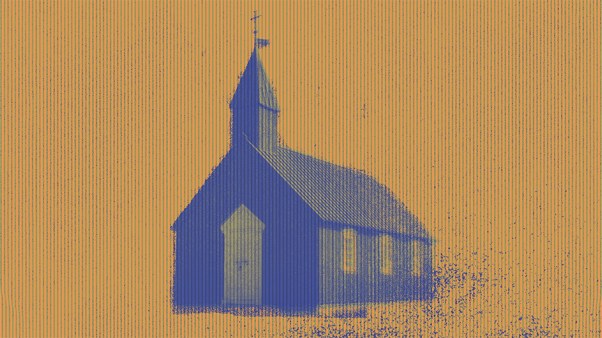Six months before the owners of her Pasadena, California, apartment sold the building, retired missionary Laura Raab started looking for new housing. By the time the official move notice came, area rents had gone up by $500 a month—well beyond what she could afford on her modest fixed income. Raab started to think she’d have to leave Southern California altogether.
Raab’s longtime church prayed for her, and she found a Christian family converting their garage into an apartment. She couldn’t afford their asking rent either, but they generously dropped the price to meet her budget.
Four years later, Raab faced a new housing threat when massive wildfires broke out in January. The Eaton and Palisades fires destroyed over 9,400 and 6,800 structures respectively, together killing 30 people. While the infernos raged, Raab evacuated to stay with fellow parishioners from Knox Presbyterian Church.
Other families from Knox—including its pastor, Matthew Colwell—did the same. These evacuations gave Raab and Colwell newfound closeness with their hosts—and a shared experience of the city’s grim housing landscape.
Raab’s housing survived, but Colwell’s family was one of eight in the congregation who lost their homes.
In the immediate aftermath, churches all over the Los Angeles area pulled together to respond to some of the most destructive fires in their state’s history. Four months later, many of the initial relief efforts—shelters, GoFundMe campaigns, material donations—have given way to the mid- and long-term response.
That slower, more tedious work includes clearing property, planning how to rebuild, and figuring out how to address massive housing loss in a region that was already one of the country’s least affordable places to live.
In Altadena, where the Eaton fire burned, senior pastor Jose Cervantes had no idea how bad things were until his church started housing people in the “tiny little rooms” Iglesia del Nazareno uses for Sunday school. Nineteen people stayed more than two months and 14 people for three months. The last just recently moved out.
Of those guests, one family of seven had been displaced when their motorhome burned. Another family of seven had been living on the street.
Even before the fires, LA ranked among cities with the worst housing shortages in the country, with fewer than 3 percent of nonhomeowners able to afford a mortgage.
“It’s like a housing crisis suddenly got pushed over a cliff,” Colwell said. For now, he and his family have moved into housing for retired pastors.
The church building survived, and Colwell believes his home insurance will cover most of the rebuilding costs, but others face a much greater toll. Jill Shook, cofounder of Making Housing and Community Happen, said some families who had paid off their houses—perhaps inherited from relatives—didn’t have home insurance.
And pastors at the 11 houses of worship destroyed in the Eaton Fire face a double challenge: losing their buildings on top of so many congregants losing their homes.
“We have this in common, this loss, and a lot of overlap in our experience of it,” said Carri Patterson Grindon, who leads Saint Mark’s Episcopal Church, which burned.
Almost three miles north of the 210 freeway that cuts through what was a once a thriving Black neighborhood, the church sat a few blocks southwest of the now-barren hills that form Eaton Canyon. Before the fire, tree-lined arteries such as Altadena Drive and Lake Avenue connected restaurants, grocers, and thrift stores to residents of the bungalows and other homes that stretched up to the hills.
Lifeline Fellowship Christian Center also burned down, as did two of three other churches near the intersection of Altadena and Lake, said Charles Dorsey, Lifeline’s senior pastor.
Through the Clergy Community Coalition, a group of about 100 churches and ministries in the Pasadena area, Dorsey and Grindon have connected with other leaders responding to dramatic shifts in church life.
The coalition’s executive director, Mayra Macedo-Nolan, said they’ve seen an uptick in attendance at local meetings, as clergy want to connect to share building space, resources, and stories.
“We’re working hard to understand what it means to be in solidarity with each other,” she said.
Cervantes said donations from other churches helped Iglesia del Nazareno, which averages 95 attendees each Sunday, assist people with rent. The church also replaced a large family’s motorhome and helped a formerly homeless family find an apartment. He estimates his church received about $60,000 in donations and have commitments of $30,000 more.
Housing advocates like Shook hope Christians will rely on their newly strengthened community for the challenging work of ensuring their neighbors have homes to go back to.
“The response of the church around this fire has been beautiful,” Shook said. But she distinguished the “mercy response” of immediate help with the “justice response” of long-term work to rebuild.
Much depends on how Altadena rebuilds. Local officials propose accelerating the process by adjusting existing housing regulations. For one, the Los Angeles County Board of Supervisors recommended California suspend a state law that allows owners to split their lots.
If approved, the move would limit Altadena’s housing density and who could afford to live there.
“Historically, ‘keeping the character of the community’ has served to exclude lower-income residents,” Shook said. “For people that have lived for generations on a property and they’re on a big property, why not let them sell the other half so they can stay?”
According to Azusa Pacific University assistant professor Margaret Lee, affordable housing refers to both subsidized housing and housing available at an affordable cost relative to income—no more than 30 percent. Lee teaches social work at Azusa and serves as an adviser for Making Housing and Community Happen.
For renters like lifelong Pasadena resident Tatiyana Riley, that meant working three jobs, even before the Eaton Fire. Riley, who took advantage of a day shelter at Pasadena Foursquare Church during the weeks she thought her building had burned, makes $17 an hour at her full-time job as a server, just above California’s $16.50 minimum wage.
But to rent her $1,250 apartment on that income—and meet landlords’ 30 percent of gross wages requirement—she’d need to work 57 hours a week, or 29 eight-hour days a month. To afford it, Riley works two side jobs and shares her small one-bedroom apartment, which has poor plumbing and baseboards that were covered in mold and mildew when she moved in. But at least it has a kitchen. The room she used to rent alone for $1,200 a month didn’t even have a fridge or stove, and she had to share the bathroom with others in the building.
Lee said the lack of undeveloped land in LA County makes it hard to build more housing without building densely. But even unsubsidized buildings like duplexes, triplexes, fourplexes, or apartments bring resistance.
“Once a multifamily development gets put in your neighborhood, it’s perceived as a threat” regardless of neighborhood political leanings, she said.
Multiple people interviewed for this story mentioned a recent lawsuit in nearby La Cañada Flintridge, where the city tried to stop its first multifamily housing development in years.
Shook thinks Altadena is ideally suited to adding duplexes and, in some areas, multiunit buildings. Lee has proposed to her state senator, Sasha Renée Pérez, that California amend its budget to give grants to Eaton Fire victims for accessory dwelling units like an in-law unit or tiny home. Use of several pre-approved plans would expedite permitting to build.
“Then, while they’re living in it, they can start constructing their primary house,” said Lee, who teaches Azusa’s social work policy classes. Under her plan, grant recipients would agree to rent out the added units once they moved back into their reconstructed homes.
Senator Pérez selected Lee’s idea out of several proposals as the one budget amendment she’ll submit during the annual process in May. If the proposal advances, it’s unclear how that would interact with the county’s recommendation to restrict lot splits.
Church land provides another opportunity. Since Making Housing and Community Happen launched its congregational land team in 2019, over 100 Southern California churches have approached the group for help as they consider using part of their land for affordable developments.
Shook’s organization does “all the preliminary planning for churches,” she said, but the process can take years. One of 45 churches her organization is working with is now close to breaking ground on a project that will convert school classrooms into 60 units of housing.
The proposed restrictions on lot splits come just as church leaders across the region have begun rethinking their property, damaged churches weigh how and whether to rebuild, and others consider how they can use the spaces they have to serve the changing needs of their neighbors.
For Door of Hope, a longtime Pasadena ministry focused on preventing family homelessness, the fires spurred a reassessment of their mission. Jim Howe, the nonprofit’s chief operating and financial officer, said the scale of housing loss personally affected their staff: CEO Megan Katerjian and three other staffers lost their homes.
The ministry already ran four transitional housing facilities and a homelessness-prevention and rehousing program that served about 200 clients a year. It quickly decided to hire another caseworker so they could help some families affected by the fire.
Howe said many of them had been paying below-market rent, so the caseworkers offered to help find options in their budgets, including negotiating with landlords and subsidizing the cost.
At first, the ministry planned to add 50 families to its usual caseload, budgeting for both an additional caseworker and some direct aid for each family. “But we quickly found out that the need is much greater than that,” Howe said.
After further discussion and an influx of donations, the board has broadened the scope. “Staff can grow this program to whatever they can effectively fund and efficiently operate,” he said.
Even churches beyond the burn zone reevaluated their roles and resources in response. Two days after the fire, Pasadena Foursquare Church opened its building as a day shelter and contacted the denomination’s relief fund, which gave the church $2,000.
“We’re a small little church,” said Carolina Majors, who helps her husband pastor the church. On a typical Sunday, perhaps 50 to 60 people attend, including children. “We thought we were so limited because of our building,” a structure that’s in poor condition and is small relative to the land they own.
But even if they couldn’t host a church that had lost its building, the Majorses found another way to help: using their building as a day shelter. For the first two weeks after the fires, they opened up daily. By late April, they were down to two days a week but still offering their space to people like Riley.
Majors said people came from as far away as San Francisco and Sacramento to volunteer. Through the Majorses’ denomination, churches throughout the state and across the country reached out to offer help.
“We were able to raise—like, not us, God did it—$20,000,” Majors said. The money went to temporary housing, household essentials, and groceries.
“They’re really open and receptive to the community,” said Riley, who described leaving the church’s shelter “with a less heavy heart, a less heavy spirit.”
In La Cañada Flintridge to the west of Altadena, four churches hosted Making Housing and Community Happen for an all-day housing-justice event in the aftermath of the Eaton Fire. Kyle Sears, pastor of La Cañada Congregational Church, brought up the community’s history as an unofficial “sundown town,” expecting non-whites to leave at night. More recently, the city had been fighting a years-long lawsuit that sought to stop one of its first multifamily developments in years—proposed to be built on the grounds of a former church.
On March 4—three days after the event—the city abandoned its lawsuit after a court ordered the city to post a $14 million bond.
“When people think justice—even racial justice—they don’t think zoning,” Lee said. “But really, when you drill down into the policy, that’s what it comes down to. … It ultimately comes down to loving your neighbor, whether it’s through giving someone a sandwich or sitting through a city meeting or writing an advocacy letter to your politician. It’s all a form of love.”
Raab, the retired missionary, said after returning home, she gave a thank you gift to the family who hosted her during the evacuation. She got a note in response: “You’re family now.”








